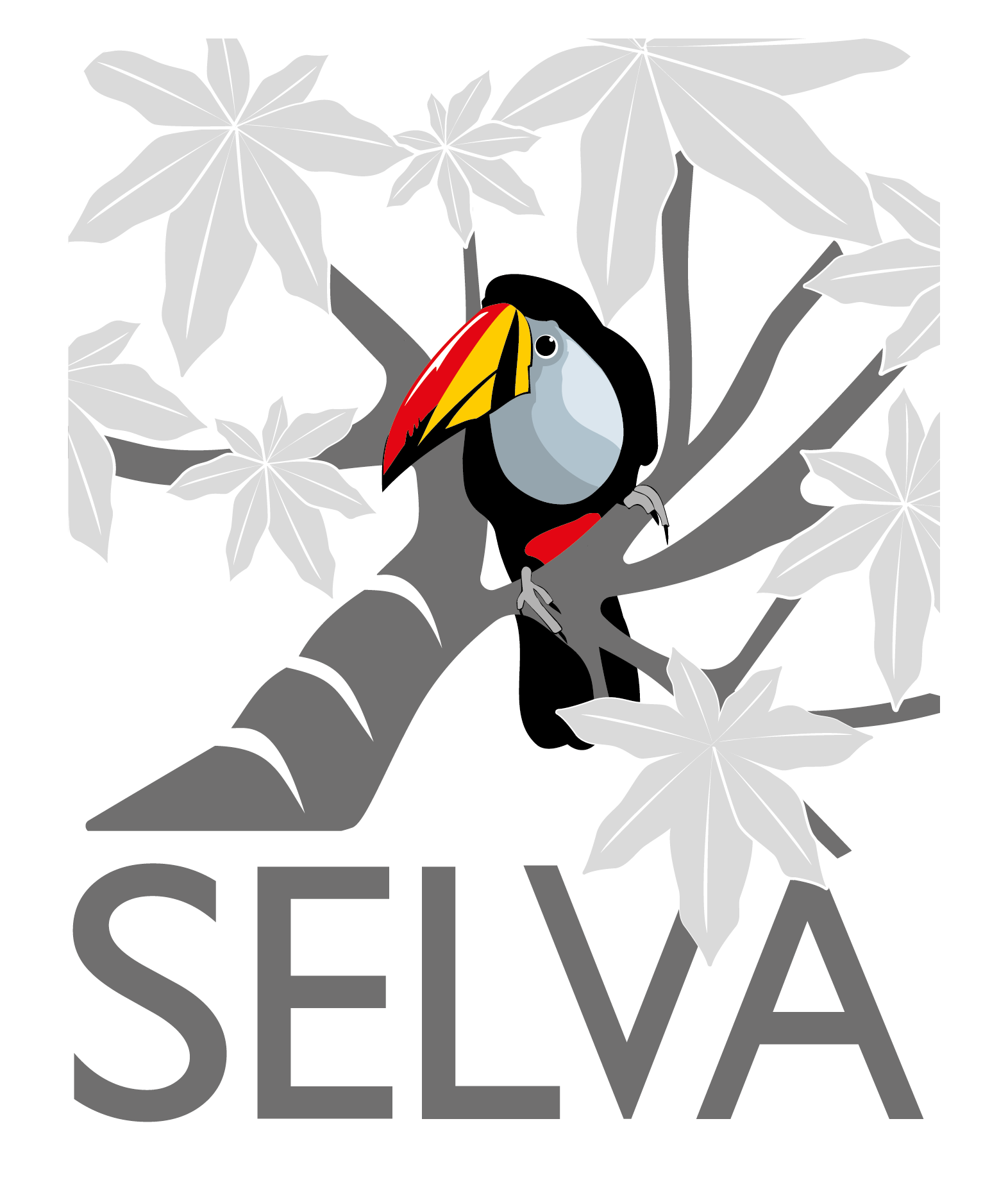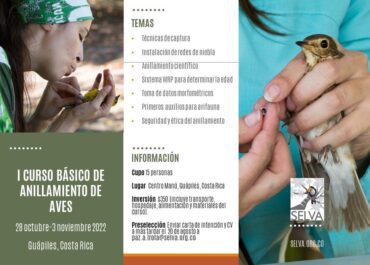Bird banding courses
Home | Bird banding courses
Share
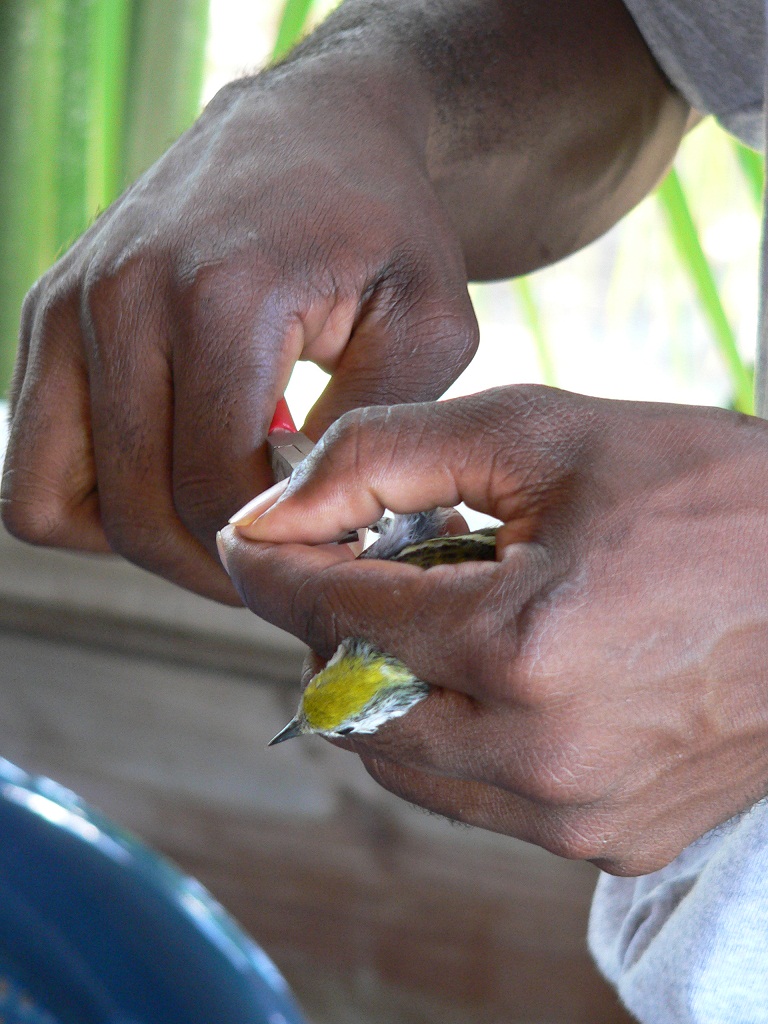
Empowering the researchers of the future
Scientific bird banding is a widely used technique that has served the study of birds for more than a century. It involves marking individuals with uniquely numbered metal bands, that then allow individual identification, obtaining information about movements, body condition, life span, breeding status, among many other things. A good portion of our knowledge about the biology and ecology of birds we owe to bird banding.
Bird banding takes time and practice to master. Given the need to capture and manipulate birds, banding requires lots of care and specialized training to guarantee bird welfare and safety. SELVA offers two courses, a basic and an advanced banding course.
SELVA is a member of the International Birk Marking Committee (IOC Bird Marking Group), and we work under high standards of ethics and safety.
Basic bird banding course
This course introduces bird banding and basic data collection of birds in the hand. We emphasize safe mist-net extraction and handling techniques, identification skills, basic techniques for ageing and sexing birds in the hand and evaluation of body condition and breeding status.
The course has a strong component of ethics and safety during bird banding and provides the foundations for people interested in initiating a training process in bird banding.
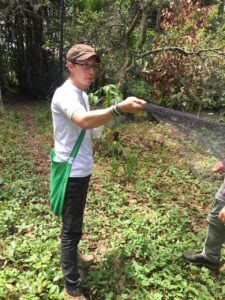
Advanced bird banding course
This course digs deeper into knowledge and dominion of bird banding as a research tool. It requires that trainees have previous practice in bird handling and potentially marking, and that they want to advance in its use. We include advanced topics such as different capture techniques (eg. canopy netting), advanced ageing, taking additional simples from birds (eg. blood, feather, claw, fecal), telemetry and installation of tracking devices (eg. radio transmitters), coordination and management of a banding station and analisys of data.
We maintain a strong focus on safety, ethics and bird welfare, and we expect more from each trainee in view of them becoming proficient, rigorous and independent bird banders.
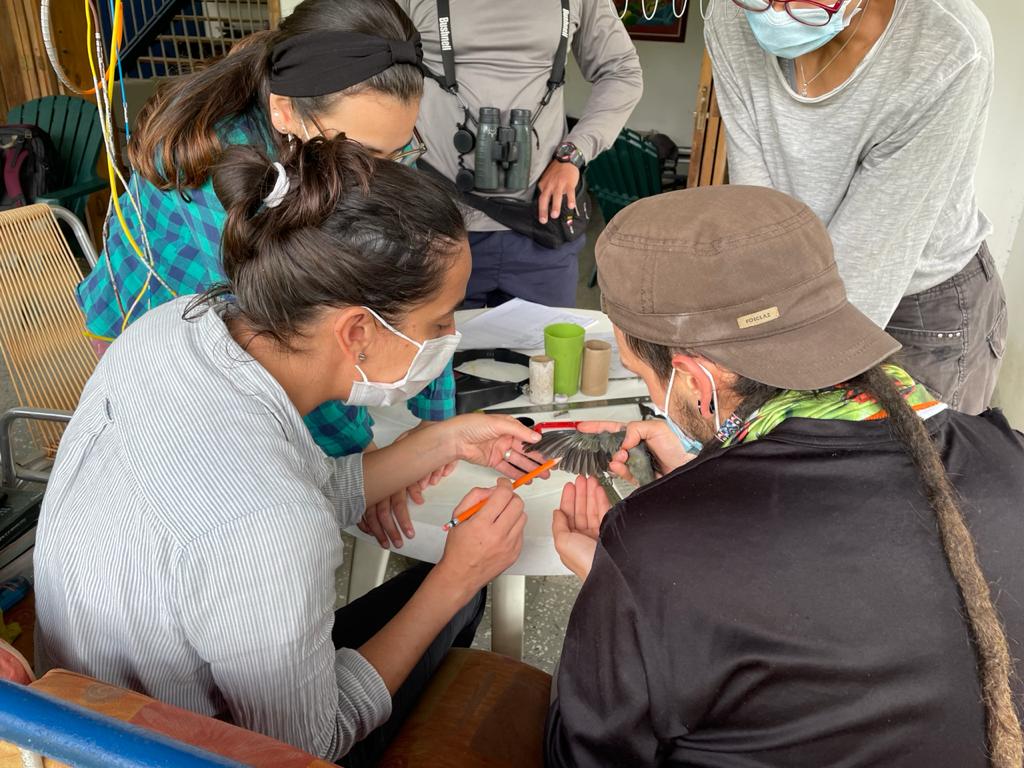
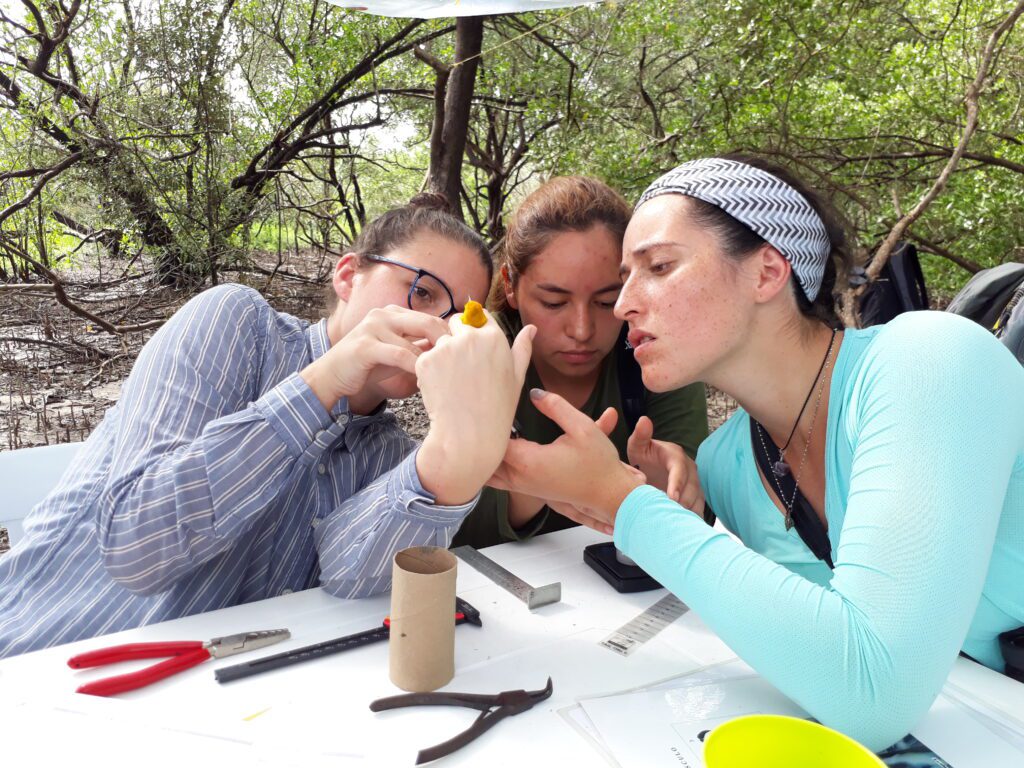
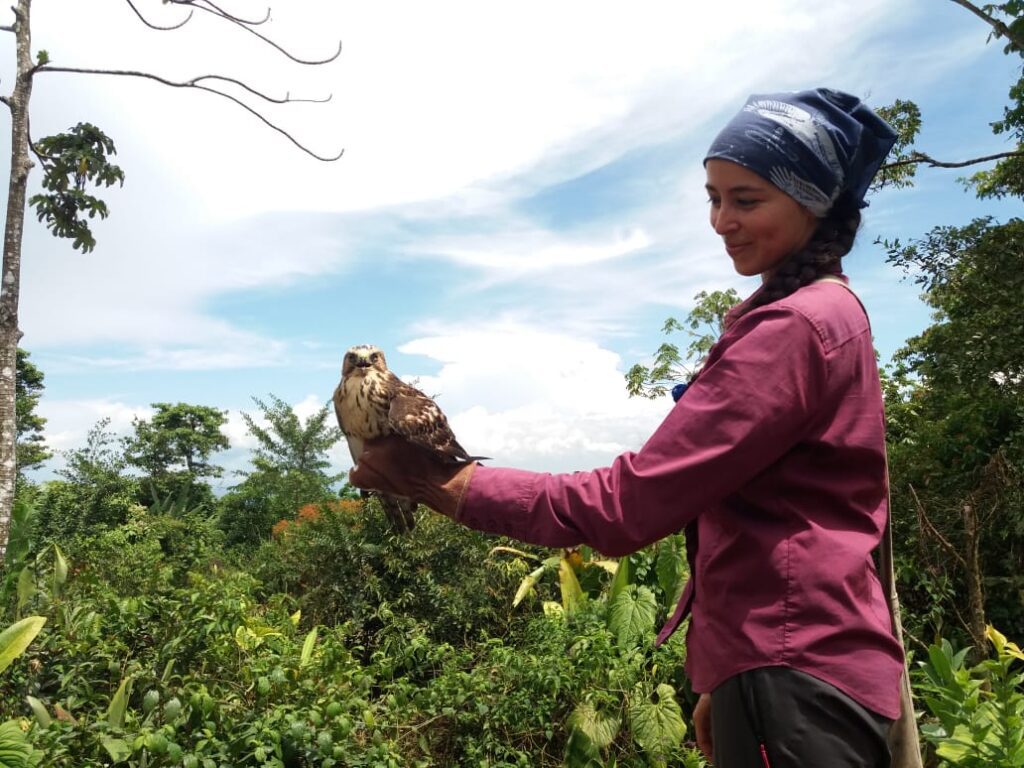
Structure of the courses
Our courses consist of 50% hands-on practical capture and banding sessions, supervised by certified trainers, combined with 50% talks, Dynamic discusión and feedback sessions that cover the theory and concepts that are learned each day. We work in small groups of 4 trainees per trainer, guaranteeing a personalized learning experience which can be adapted to the needs and knowledge of each participant.
We generally set up capture and banding stations which are monitored to maintain optimum capture rates (eg. To maximize practice and learning whilst maintaining bird safety), and trainees rotate between groups so that they learn from all the instructors during the length of the course.
We promote a safe environment, ideal to learn, socialize and share with peers form many places. After the courses we try to keep in touch with trainees to give continuity to their learning process.
Trainee profile
Biologists, ecologists, professionals and technicians in environmental science, and people with previous knowledge about the biology and identification of birds, and who are interested in learning or perfecting their scientific banding skills. We seek trainees who will ideally use bird banding as part of their research projects.
For the advanced course, participants require previous experience in bird capture and handling, and preferably marking as well.
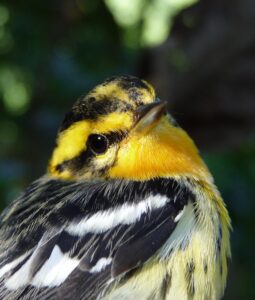
Upcoming courses
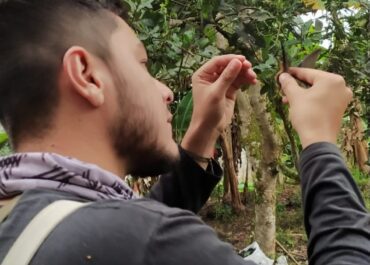
7 – 12 Dec 2022 Chinchiná – Caldas: Basic bird banding course. Applications open at convocatorias@selva.org.co
Empowering the researchers of the future
When you support our courses, you give brilliant people access to high quality training. The resources we obtain serve to give course scholarships to those who need them most.
